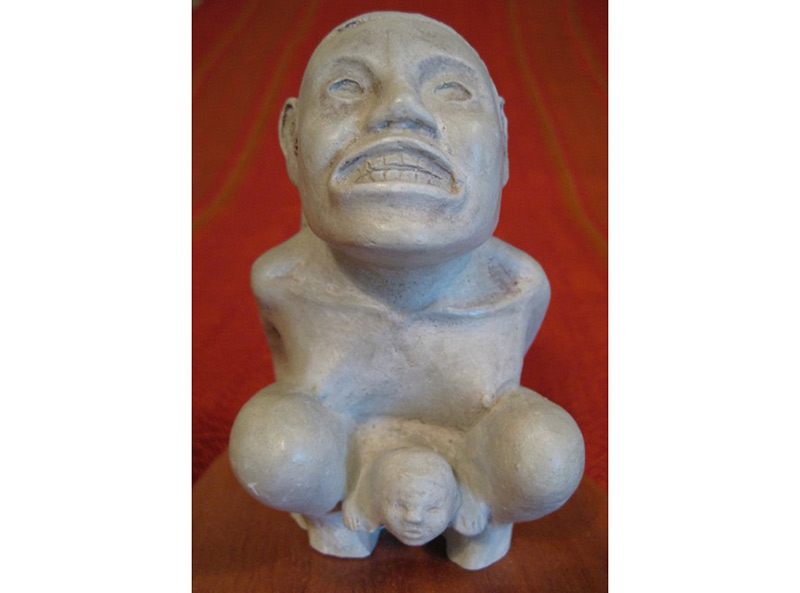
Where Do Babies Come From?
By Laura Maxson
The stone goddess pictured here is open mouthed, likely emitting a full throated roar as she opens herself to give birth. This is the face of birth. It is uncommon now to see such instinctive and primal behavior.
This archetypical birth goddess has at once been humbled and empowered. Her face, transformed by labor’s intensity, becomes the face of all birthing people. Features soften as they revert to a more primitive existence – based simply on survival. Breath by breath, and contraction by contraction, she goes so deep within her body’s power that she becomes one with it. Giving birth with all the power of the universe and at the same time acutely aware that she is alone in the task.
Homebirth midwives and care providers who work with those planning natural or physiologic births see this transformation regularly. Research shows that in cultures that assume labor will be hard, experience less pain. They know they will get through it just as their ancestors did. Is it any wonder then, that in our culture where birth is thought of as a surgical procedure, necessitating anesthesia and technology, that most of those in labor get an epidural and one in three give birth by cesarean section?
There was a time when babies grew and developed during pregnancy with nothing more than time and nourishment. They came out through labor produced with the power of the body’s own hormones. We have forgotten that pregnancy and birth are body driven, not doctor driven. Ultrasounds don’t grow babies; epidurals don’t make them come out. Technology can be essential for specific problems and high-risk pregnancies; however, when served a steady diet of high-tech medical care that documents normal pregnancy progression but neglects the emotional preparation for a life-changing event, expectations change.
It used to be that babies all came from that place of the stone goddess – from the body’s toil, sweat, and tears of labor. Nature intends that babies come from deep inside the body’s very core. Labor allows that core to be reached by slowly stripping away outer layers one by one, until after the fear, pain, and exhaustion comes a powerful truth – that bodies are strong. That surrendering to labor brings not defeat, but the victorious roar of that final push that brings both the baby and the powerful transition to motherhood and parenthood.
Childbirth produces a progression of physiological changes that aren’t always valued. The body’s own hormones act upon the pregnant body and baby to optimize birth, love, bonding and lactation. But, it’s not hard to disrupt the hormones and the physiology of labor and birth. It can be as simple as beeping machines, clacking computers at bedside, opening the door of the labor room, flipping the lights on, and asking again, “how is your pain now?”
As labor is disrupted, technology is often applied. Replacing normal birth hormones with synthetic hormones may not be as straightforward as we think. Synthetic oxytocin (Pitocin) by IV reduces oxytocin levels in the laboring brain, opiates reduce the body’s own natural endorphins, and epidural medication reduces hormones that help prepare the baby and mother for birth.
The stone birth goddess pictured here may look a little scary, but there is no denying her power. Most everything in the current medical model of care for birth is designed to minimize this power. It takes hard work in our culture to come to birth prepared to actively claim their authority for a powerful birth.
Childbirth classes are disappearing as parents more and more relinquish the responsibility for learning about and preparing for childbirth. The eight to 12 week long childbirth class series that were once the norm have been replaced by just one or two short classes.
When a pregnant person feels fear and panic in anticipation of labor, and is surrounded by those who devalue the experience of childbirth, it is easy to relinquish the opportunity to go to that deep place that forever remodels the structure and strength of a parent. In order to change the expectations of labor and birth in our culture, it is our responsibility to convey the image of the stone goddess and all she represents as one that nurtures an anticipation of power.
Find midwives, childbirth classes and more – birthnet.org





